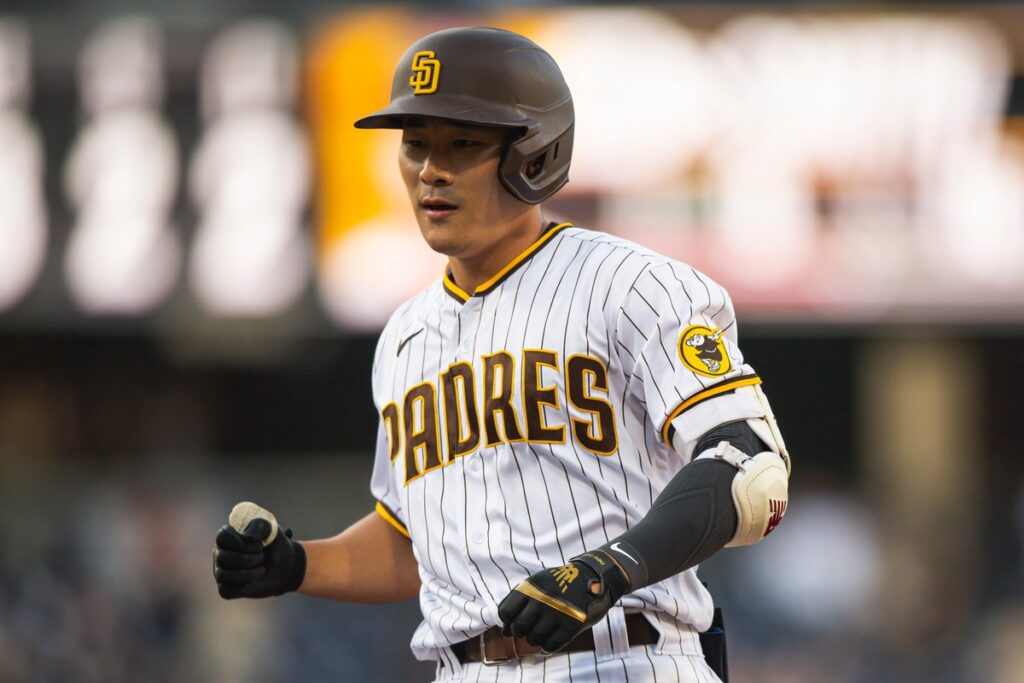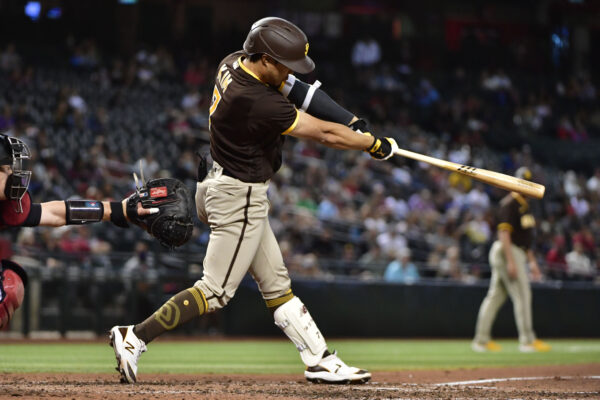Was Ha-Seong Kim productive in 2021 for Padres?

Credit: AP Photo

The 2021 San Diego Padres season was a massive failure.
In the offseason, the team acquired Blake Snell, Joe Musgrove, Yu Darvish, Victor Caratini, and Ha-Seong Kim. These additions made the Padres early contenders to dethrone the Los Angeles Dodgers from their reign over the NL West.
Obviously, that didn’t happen. Most of those acquisitions were veterans that wildly underperformed this season. Snell, Darvish, and Caratini all fit in that group. Musgrove was the clear steal from the offseason. He threw the first-ever no-hitter for the Padres and ended the season as the ace of the staff.
That leaves Ha-Seong Kim somewhere in the middle. He doesn’t fit the mold of a veteran traded to the Padres; instead he signed with the Padres out of the KBO. While he was a star in Korea, the two leagues don’t have the same level of competition. According to scouts that Kyle Glaser talked to, the KBO is somewhere between Double-A and Triple-A.
One of the most significant differences is the level of pitching. The average fastball in the KBO is around 88 mph, while the average MLB fastball is over 92 mph. Now think about facing pitchers that can crank it up to 100 mph. The biggest task for Kim this season was adjusting to a broader range of pitch velocities and seeing movement on those pitches.
The high velocities weren’t a problem for Kim. He successfully changed his timing and bat speed to meet the increase in velocity. On cutters, sinkers, and 2-seam fastballs that are 90 mph or higher, Kim had a .900 OPS. It was the absence of velocity that fooled Kim.

Despite struggling to produce on offspeed and breaking balls, his approach was on par with the rest of the league. His 23.8 K% is better than the league average, and his 7.4 BB% is slightly below the league average.
His average exit velocity of 86.7 mph doesn’t jump off the page. It’s comparable to fellow second basemen Jake Cronenworth and Adam Frazier. Both of them have become successful by trading power for contact. Kim may choose to do the same in the coming years.
Still, Kim posted a 70 wRC+ this season when 100 wRC+ represents the average MLB player. His bat was below average, but for 2021 he gets a slight break while adjusting to the new pitching.
Where did Kim shine? On the field, he was one of the best Padres. His 6.2 defensive WAR only trails Manny Machado(6.5) among Padre position players. Kim’s numbers stand out even more when you realize he played 664 fewer innings than Machado. He also logged over 100 innings at second, third, and shortstop.
One problem when judging Kim is the lack of players who have been on the same path to the MLB. Right now, there are just two other Korean position players in the MLB. Ji-Man Choi had a .610 OPS in his rookie season compared to Kim’s .622. Choi has since developed into a slugging first baseman for the Tampa Bay Rays. Hoy Park debuted this season for the Pirates. In 45 games, he posted a .633 OPS. One key difference is that Park joined the Yankees when he was 19 years old and climbed his way through the minor leagues, just like nearly every other player.
[wpedon id=”49075″ align=”right”]
So, did Kim have a good season? Yes. Despite inconsistent playing time, he was able to make adjustments throughout the season. In the second half, he increased his BB%, OBP, ISO, and wRC+. This season set the foundation for Kim to become a better player in the future.
With that said, Kim’s future is still up in the air. His playing time was severely limited due to a loaded infield. Unless changes are made in the offseason, that will be the same in 2022.
Is he worth $7 million a year?
Did he meet expectations for 2021? Does he deserve more playing time in 2022? Let me know your thoughts.
Evan is a student finishing up a degree in Finance from Northern Arizona University. The ability to break down numbers and find the story behind them has lead to his first of writing for East Village times. He covers baseball which is the sport he grew up playing and has followed even after his playing years.